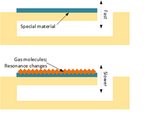lufer17
Member level 5
Hello everyone, I'm having trouble understanding how the gas sensor with MOS technology works. I cannot find a study material with the basic principles of operation. I can find some subjects, but with information such as too deep knowledge, I have no in-depth knowledge on the subject.
Could someone please explain give me a link, document (PDF) that talks about this subject in a fundamental way how it works?
Could someone please explain give me a link, document (PDF) that talks about this subject in a fundamental way how it works?
